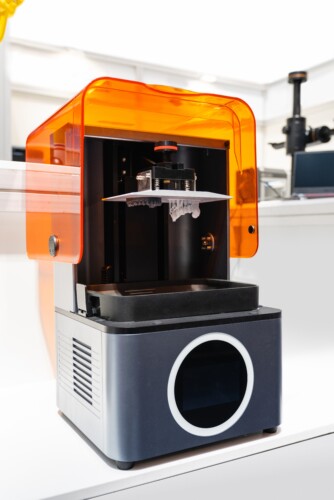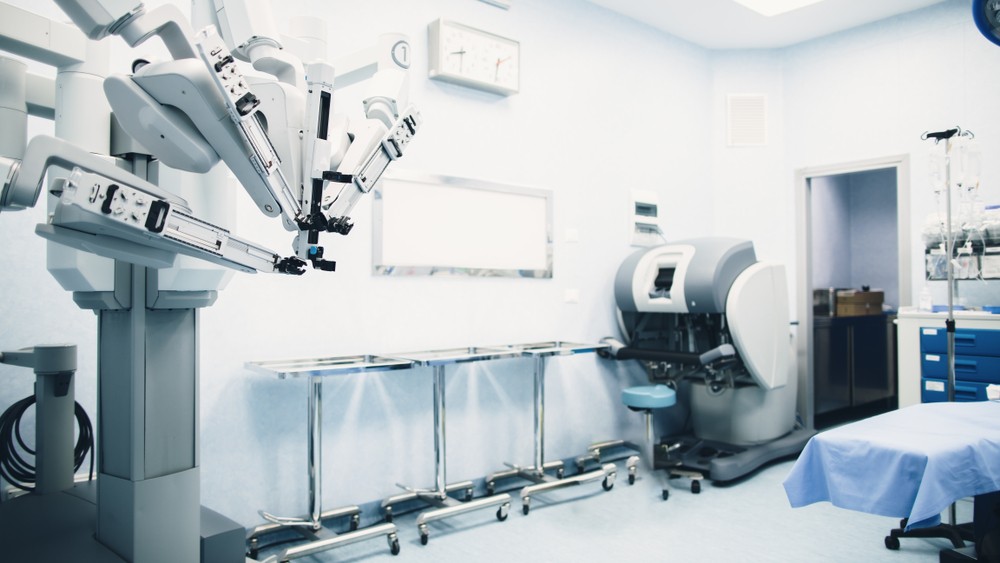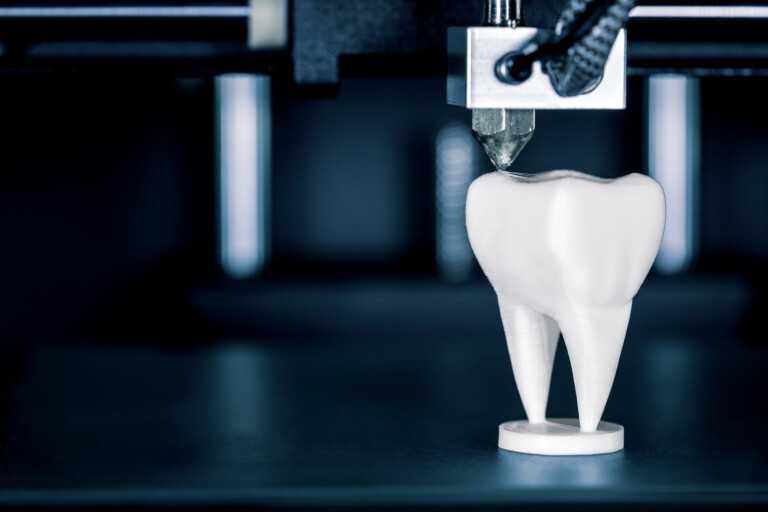Digital Dentistry on the Rise
3D printers have arrived in dental offices around the country. Even in local family practices, it isn’t uncommon to see the square machine with its orange shield sitting on a workspace counter. What was once” the future of dentistry” is, increasingly, it’s present. The benefits of in-house 3D printing (convenience, speed, and accuracy) are well-known talking points by now, repeated by journalists, salespeople, and educators.
However, an April 2023 report from the American Dental Association (ADA) Clinical Evaluators Panel shared some surprising findings. Dentists are slower to pick up on this new technology than expected. Per ADA News, “The report, which includes the responses of 277 ACE Panel member dentists, found 17% of dentists currently use a 3D printer, and of them, 67% have been using it for less than two years.”

How Are Dentists Using 3D Printers?
The dentists who did report using a 3D printer most commonly stated that they started in order to control workflows, increase efficiency, lower costs or shorten manufacturing times, and supplement or enhance other digital technologies.
Almost 50% of respondents said they use a 3D printer on at least 25% of their cases each month. The most common 3D printed interventions were surgical guides, splints and occlusal devices, and diagnostic models.
The digital dentistry trendline still continues its upward march: over 20% of respondents said they were considering investing in a 3D printer, with 35% stating they were considering getting training in 3D printing workflows. However, adoption numbers are lower than some experts have predicted.
Are slow adoption rates a sign of a normal learning curve for integrating a new technology, or are they a sign of something deeper? With the benefits of digital dentistry being so loudly trumpeted from all corners, what is causing this hesitation when it comes to actually bringing 3D printers into the office?
Cost of a 3D Printer
For a number of important reasons, dentists have been hesitant to fully integrate 3D printer technologies into their practices. The ADA report identified two main concerns: the financial investment is too high, and dentists do not think they need it/do not see a clinical benefit yet.
The main obstacle is the upfront expense of purchasing and integrating 3D printing systems into current dental workflows. Dental practices, particularly smaller or independent ones, may find it financially burdensome to pay the upfront costs for printer purchases, related software, and required training. The total cost is further increased by the need for potential upgrades, material costs, and ongoing maintenance. Historically, this is where many dentists get shy about 3D printer implementation, and why others get cold feet after starting the process.
Learning How to Use 3D Printers
Another factor hindering the rapid uptake of 3D printers in dental practices is the learning curve associated with mastering this technology. To use these printers for dental applications like making crowns, bridges, or orthodontic devices, dentists and their employees frequently need specific training.
There is a perception that a practice’s efficiency may be disrupted during the transitional phase due to this learning curve, which not only requires time but also requires a change in the conventional workflow. Because of this, some dentists may be reluctant to use 3D printing because they are worried about a steep learning curve and how it will affect their day-to-day business.
The obstacles to adopting the system right away aren’t a secret, but they might be less insurmountable than you think.
Into the Future of Digital Dentistry
Since the ADA Clinical Evaluators Panel report, 3D printer technology has continued to evolve. An October 29 “Research Feature” on Medium.com highlights the efforts of Dr. Jeffrey Gains and the South Florida Center for Periodontics & Implant Dentistry. Dr. Gaines is a strong believer in the future of digital dentistry, and has committed a great deal of effort to developing and then perpetually refining the process of ideation and implementation of his workflows. His team is specifically focused on implant technology, a field that continues to expand and evolve in surprising ways.
Particularly when it comes to using implants to replace lost teeth, dental technology has advanced significantly. These implants are no longer just fixtures. These days, they’re sophisticated solutions that heavily rely on robots. These robots function as extremely intelligent dental assistants. To ensure that the surgery is extremely precise, they are outfitted with a unique system that functions somewhat like GPS.
Advances in Dental Implants
This technology is revolutionary—especially for upper teeth. People may experience problems if their jawbone shrinks as a result of losing their upper teeth. Fixing this used to require extensive and dangerous surgery to strengthen the jawbone in preparation for implants. However, things are much better now because of the type of robot technology that we have access to. These incredibly accurate robots can place implants in the jaw without requiring additional surgeries.
This means it’s safer, works better, and takes less time to heal. It combines the dentist’s expertise with the machine’s accuracy. When paired with an efficient and reliable workflow, this system has the potential to produce consistent, excellent results with fewer issues and expenses than traditional methods.

Guided surgery techniques, including the robotically precise arm of the da Vinci Surgical System, are leading to shorter healing times, and a quicker route for patients back to full, unrestricted use of their teeth. Theoretically, this creates a direct path to improved patient satisfaction. The less time patients spend in the chair, the more likely they are to view their experience positively. Beginning with highly specialized, customized implants leads to efficiency down the line, and efficiency can mean higher rates of returning patients.
To learn more about 3D printer technology and how to incorporate digital dentistry into your practice’s workflow, visit Benco’s website or contact one of their knowledgeable reps today for more information.


